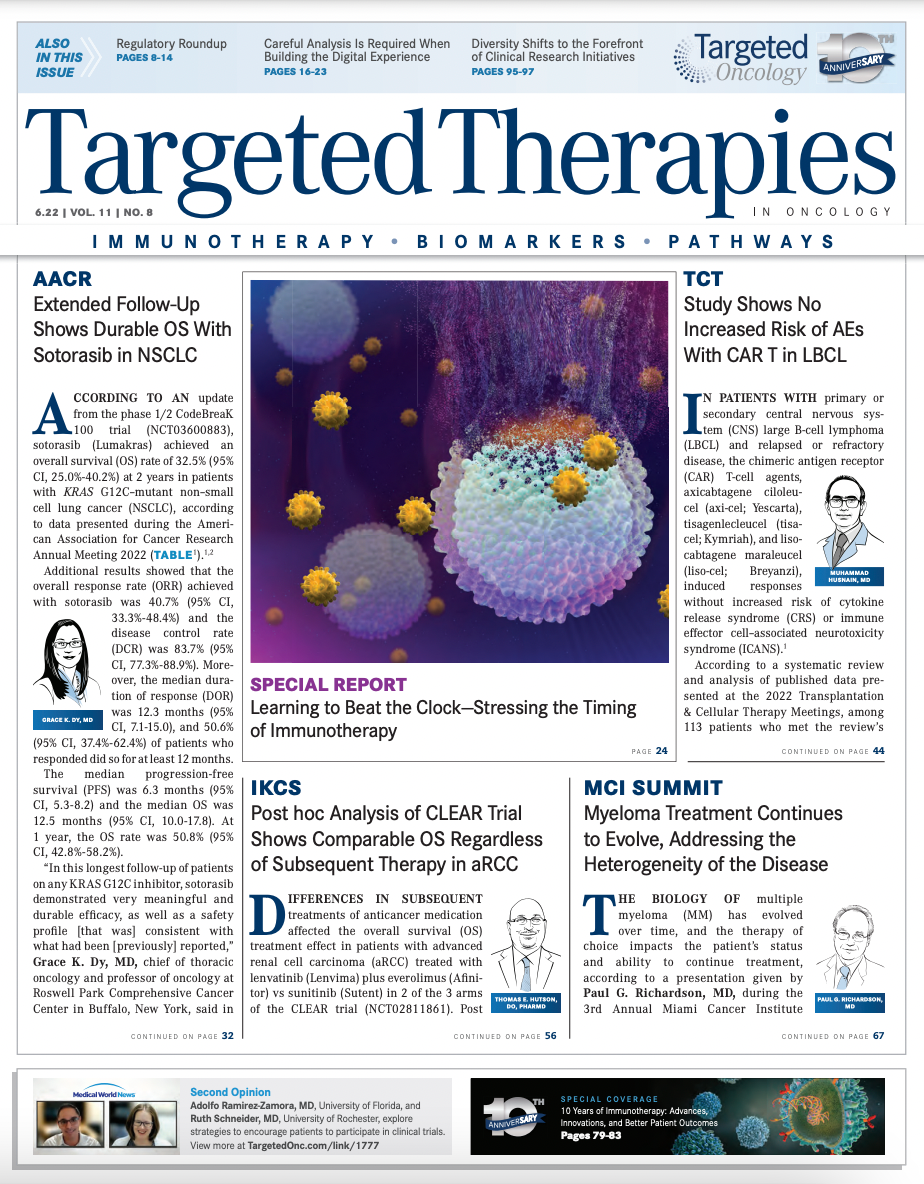Collaborative Efforts Push the Boundaries of Immunotherapy
In this month's 10-year anniversary issue of Targeted Therapies in Oncology™, we feature an article on the evolution of immunotherapy approaches in oncology over the past decade.

In this month's 10-year anniversary issue of Targeted Therapies in Oncology™ (TTO), we feature an article on the evolution of immunotherapy approaches in oncology over the past decade. It is amazing to think about how much immunotherapy has changed the practice of oncology.
I have a somewhat fuzzy memory of a lecture I attended more than 20 years ago as a first-year oncology fellow at Memorial Sloan Kettering Cancer Center in New York, New York. If I am not mistaken, I think the lecturer was the emerging star Jedd D. Wolchok, MD, PhD, and the topic was melanoma. Dr Wolchok showed old photographs of patients whose melanoma had spontaneously regressed. Simultaneously with the regression of their melanomas, some of these patients developed vitiligo, suggesting that, in these rare and lucky individuals, their immune systems had figured out a way to attack melanocytes. These observations had convinced many scientists that finding ways to direct the immune system to attack cancer cells could help overcome the limitations of conventional chemotherapy, which seemed to have reached its potential as a therapeutic modality for cancer. I remember in the early 2000s being somewhat pessimistic about the potential of such efforts, given that attempts to harness the immune system to treat cancer had been largely unsuccessful and chemotherapy and targeted therapies were the mainstays of cancer treatment.
How wrong I was.
Fast forward 20 years and we now have seen tumor-directed monoclonal antibodies, antibody-drug conjugates, cancer vaccines, checkpoint inhibitors, oncolytic viruses, and chimeric antigen receptor (CAR)–modified cellular therapies change how we treat both solid tumors and hematologic malignancies. And of course, the field of immunotherapy for cancer is showing no signs of slowing down. Bispecific antibodies to redirect T cells toward malignant target cells are demonstrating potent activity in hematological malignancies and will likely be in the clinic soon. Inhibition of novel targets such as LAG3 and TIGIT is emerging as a way of making immunotherapy work better. Natural killer cells are undergoing evaluation as cellular therapy. Allogeneic CARs are being explored for their potential to deliver therapeutic cells.
For me, the take-home message of the cancer immunotherapy story is that basic and clinical investigators working together have created novel effective treatments that have moved the field of oncology way beyond what I was able to foresee as an oncology fellow 20 years ago. The dramatic progress in our field has been the result of collaborative efforts, with countless individuals each playing a small role to push the field forward, leading to better outcomes for patients with cancer.

Survivorship Care Promotes Evidence-Based Approaches for Quality of Life and Beyond
March 21st 2025Frank J. Penedo, PhD, explains the challenges of survivorship care for patients with cancer and how he implements programs to support patients’ emotional, physical, and practical needs.
Read More